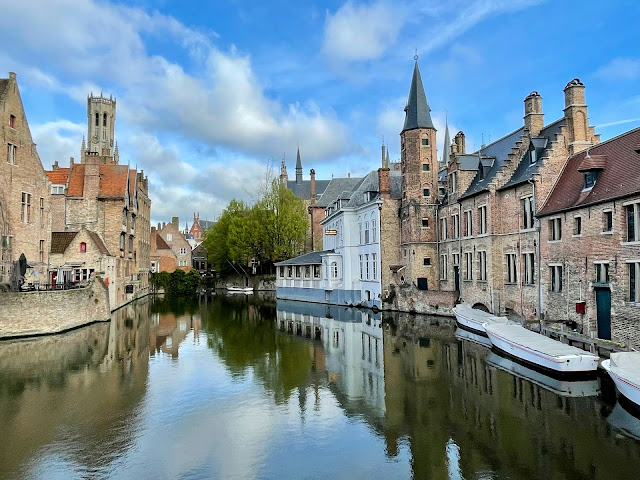Explore the Rich History, Natural Beauty and Cultural Diversity of the Gallipoli Peninsula
If you are looking for a destination that combines history, nature, and culture, you might want to consider visiting the Gallipoli peninsula in Turkey. This scenic region is located in the southern part of East Thrace, the European part of Turkey, with the Aegean Sea to the west and the Dardanelles strait to the east. It is also known as Gelibolu Yarımadası in Turkish and Chersónisos tis Kallípolis in Greek, meaning 'beautiful city'.
 |
| Gelibolu, Gallipoli Peninsula, Turkey |
However, the most famous episode in the history of Gallipoli is the Gallipoli Campaign of 1915, also known as the Dardanelles Campaign or the Battle of Çanakkale. This was a major military operation during World War I, in which the Allied powers (mainly Britain, France, Australia, and New Zealand) attempted to capture the peninsula and open a sea route to Russia through the Dardanelles. The campaign was a costly failure for the Allies, who suffered heavy casualties and had to withdraw after eight months of fierce fighting. The campaign was a defining moment for the Turkish national identity, as it marked the emergence of Mustafa Kemal Atatürk as a charismatic leader and a hero of the Turkish War of Independence.
Today, the Gallipoli peninsula is a protected landscape covered in pine forests and fringed by idyllic beaches and coves. It is also a place of pilgrimage and commemoration for Turks, Australians, New Zealanders, and others who visit the numerous memorials, cemeteries, and museums that honor the fallen soldiers of both sides. The most visited sites include Anzac Cove, where the Australian and New Zealand Army Corps (ANZAC) landed on April 25, 1915; Lone Pine Cemetery, where many Australian soldiers are buried; Chunuk Bair Memorial, where New Zealand troops fought bravely; and Çanakkale Martyrs' Memorial, where thousands of Turkish soldiers are honored.
The Gallipoli peninsula is not only a place of historical significance, but also a place of natural beauty and cultural diversity. You can enjoy hiking, biking, swimming, fishing, or boating in the stunning scenery of the peninsula. You can also explore the charming towns and villages that dot the coastline, such as Gelibolu (the namesake of the peninsula), Eceabat (the gateway to the battlefields), Kilitbahir (a fortified town with a castle), Seddülbahir (a fishing village with an Ottoman fortress), and Kabatepe (a museum village with a panoramic view). You can also sample the delicious local cuisine that reflects the influences of Greek, Turkish, Balkan, and Mediterranean cultures. Some of the specialties include lamb meatballs (köfte), cheese pastries (börek), stuffed grape leaves (dolma), grilled fish (balık), olive oil dishes (zeytinyağlı), and baklava (a sweet pastry with nuts and syrup).
If you are interested in visiting this fascinating region, you can easily reach it by bus or ferry from Istanbul or Çanakkale. The best time to visit is between April and October, when the weather is mild and sunny. However, if you want to avoid crowds and experience a more solemn atmosphere, you might want to visit on April 25th or March 18th. These are the dates when Australians and New Zealanders commemorate Anzac Day and Turks celebrate Victory Day respectively.
The Gallipoli peninsula is a destination that offers something for everyone: history buffs, nature lovers, culture seekers, or simply travelers who want to discover a new place. It is a place where you can learn about the past, enjoy the present, and hope for a peaceful future.
There are plenty of things to do and explore on the Gallipoli peninsula
Visit the Historical Sites: Explore the historical sites that played a significant role in the region's history. You can visit ancient ruins, including Cardia, Pactya, Callipolis (Gallipoli), Alopeconnesus, Sestos, Madytos, and Elaeus. These sites offer a glimpse into the ancient civilizations that once thrived in this area.
Explore the Battlefields: Discover the battlefields and memorial sites from the Gallipoli Campaign of 1915. Anzac Cove is a must-visit, as it marks the landing site of the Australian and New Zealand troops. Lone Pine Cemetery and Chunuk Bair Memorial are also significant sites for paying respects to the fallen soldiers.
Visit Museums: Immerse yourself in the history of the region by visiting the museums in Gallipoli. The Çanakkale Naval Museum and the Gelibolu War Museum provide insights into the naval and military history of the area. These museums house artifacts, displays, and exhibitions related to the Gallipoli Campaign.
Enjoy Outdoor Activities: Embrace the natural beauty of the peninsula by engaging in outdoor activities. Hiking and biking trails allow you to explore the pine forests and scenic landscapes. You can also relax on the picturesque beaches and indulge in swimming, fishing, or boating in the Aegean Sea.
Sample Local Cuisine: Delight your taste buds with the diverse flavors of the region. Try traditional Turkish dishes like lamb meatballs (köfte), cheese pastries (börek), stuffed grape leaves (dolma), and grilled fish (balık). Don't forget to savor the famous Ottoman dessert, baklava.
Attend Commemorative Events: If you visit during significant dates like April 25th (Anzac Day) or March 18th (Victory Day), you can participate in the commemorative ceremonies and pay tribute to the fallen soldiers. These events provide a unique opportunity to witness the deep respect and remembrance associated with the Gallipoli Campaign.
Explore Coastal Towns and Villages: Take the time to explore the charming coastal towns and villages surrounding the peninsula. Visit Gelibolu, Eceabat, Kilitbahir, Seddülbahir, and Kabatepe, each offering its own distinct atmosphere, historical sites, and local hospitality.
Experience Local Festivals: Check if there are any local festivals or cultural events happening during your visit. Festivals such as the Gelibolu International Music Festival or the Çanakkale Biennial offer a chance to immerse yourself in the vibrant arts and culture scene of the region.
Remember to plan your itinerary based on your interests and the duration of your stay. Whether it's exploring history, enjoying nature, or experiencing local culture, the Gallipoli peninsula offers a wide range of activities for every traveler.
FAQs
How do I reach the Gallipoli peninsula? You can reach the Gallipoli peninsula by bus or ferry from Istanbul or Çanakkale. Both cities serve as gateways to the region, offering convenient transportation options.
When is the best time to visit the Gallipoli peninsula? The best time to visit is between April and October when the weather is mild and sunny. However, if you prefer a quieter atmosphere and wish to participate in commemorative events, consider visiting on April 25th (Anzac Day) or March 18th (Victory Day).
What are some must-visit historical sites on the Gallipoli peninsula? Some must-visit historical sites include Anzac Cove, Lone Pine Cemetery, Chunuk Bair Memorial, and the Gelibolu War Museum. These sites offer profound insights into the Gallipoli Campaign and its impact on history.
Are there outdoor activities available on the Gallipoli peninsula? Yes, the Gallipoli peninsula offers a range of outdoor activities. You can hike or bike through scenic trails, swim in the Aegean Sea, go fishing, or enjoy boating amidst breathtaking landscapes.
What kind of cuisine can I expect to find in the region? The region's cuisine reflects influences from Greek, Turkish, Balkan, and Mediterranean cultures. Don't miss out on trying traditional dishes like lamb meatballs (köfte), cheese pastries (börek), stuffed grape leaves (dolma), and baklava.
What are some nearby towns and villages worth exploring? Nearby towns and villages such as Gelibolu, Eceabat, Kilitbahir, Seddülbahir, and Kabatepe offer unique historical sites, coastal charm, and opportunities to immerse yourself in local culture.
Can I visit the Gallipoli peninsula as a day trip? While it's possible to visit certain sites on a day trip, fully experiencing the Gallipoli peninsula's offerings is best done with multiple days dedicated to exploration. Consider planning a longer stay to make the most of your visit.
The Gallipoli peninsula beckons travelers with its captivating blend of history, natural beauty, and cultural allure. Embark on a journey that will immerse you in ancient civilizations, commemorate fallen soldiers, and allow you to appreciate the stunning landscapes of this remarkable destination.
Turkey Unleashed: A Traveler's Guide to Embracing Turkish Culture, Cuisine and Etiquette



Comments
Post a Comment
It's easy to leave a comment on our blog – anyone with a Google account can do it. We invite you to share your experiences by leaving a comment as well.